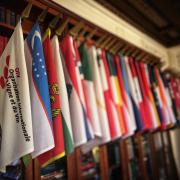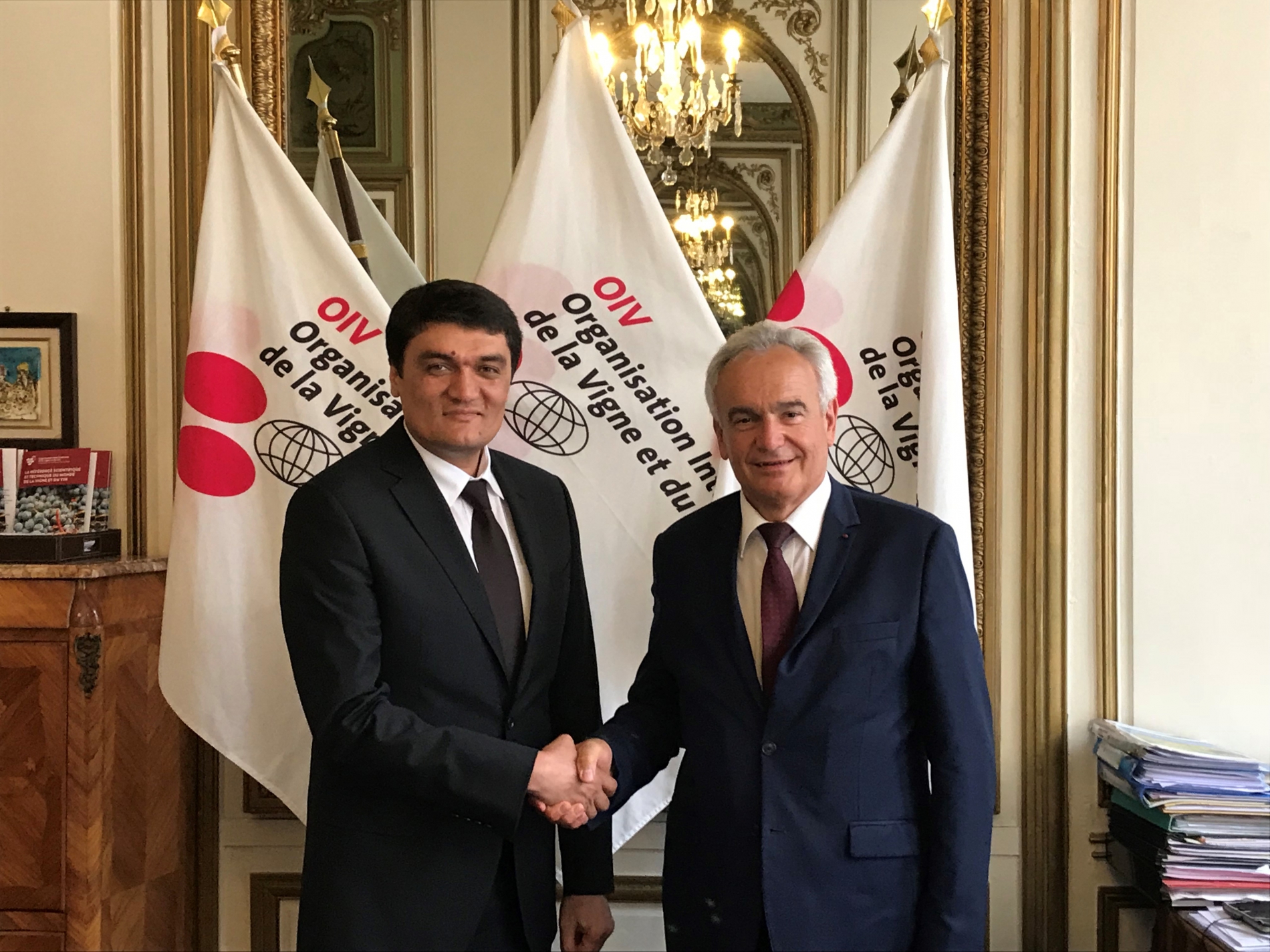
As explained by the Uzbek Minister for Foreign Affairs, Abdulaziz Kamilov, through this membership Uzbekistan hopes to support the government's efforts to develop a vitivinicultural sector which is rapidly changing and which has been the subject of a development plan enacted by the President of the Republic.
During a conversation with the Uzbekistan Ambassador to France, the Director General of the OIV expressed his pleasure at the new membership of this nation which is the largest producer of grapes in Central Asia and is one of the leading exporters of fresh grapes.
Jean-Marie Aurand also reminded those assembled that the official induction of this new Member will take place at the OIV General Assembly in Punta del Este next 23rd November.
Fresh Grape Production in Uzbekistan
The production of fresh grapes takes place primarily in the South of the country, Samarkand, the Surkahandarya regions and Fergana Valley thanks to a long warm period which lasts from spring to autumn and allows for the growth of around forty different varieties. The main varieties used are Soyaki and Bayan-Shirin (sparkling wines and brandies), Saperavi and Rkatsiteli (still wines) and May Black, Rosy Muscat and Hindogni (dessert wines). For fresh consumption, the most popular grapes are the Khusayni, Rizamat, Kishmish and Damskiy Palchik varieties.
As part of the government’s development plan, vineyards have been expanded to 133,000 hectares (2013) for a grape production of nearly 1,322,000 tonnes (2013) and continue to grow with new planting.
73% of the production is consumed locally in the form of fresh grapes, 4% is exported. The remaining 23% is used for the production of grape juice, wines and brandies. The largest business in the country is the Uzvinsanoat Company which brings together 120 processors of which 83 are wineries which use around 215,000 tonnes of grapes.
Uzbekistan produces nearly 60,000 tonnes of raisins annually, half of which is exported.
